Click here and press the right key for the next slide.
(This may not work on mobile or ipad. You can try using chrome or firefox, but even that may fail. Sorry.)
also ...
Press the left key to go backwards (or swipe right)
Press n to toggle whether notes are shown (or add '?notes' to the url before the #)
Press m or double tap to slide thumbnails (menu)
Press ? at any time to show the keyboard shortcuts
Quick Answers Fail
sub-plan
1. primitive actions
2. events (Ludwig)
3. intentions (The Simple Theory)
thf. need shared intention
1
quick answer












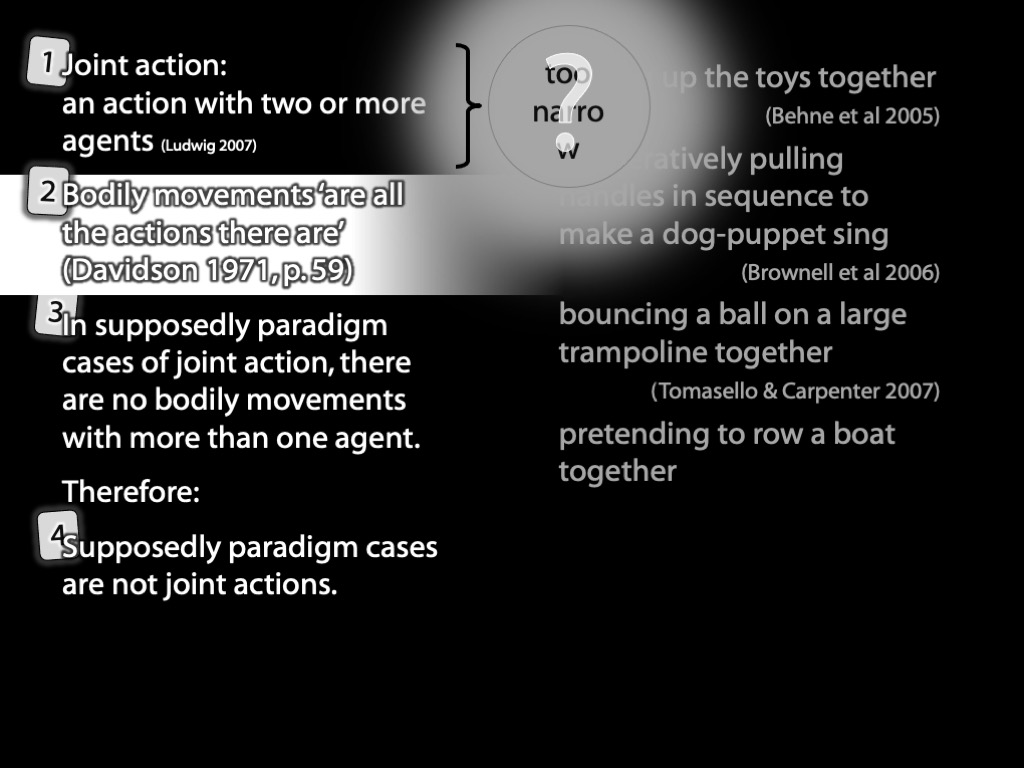
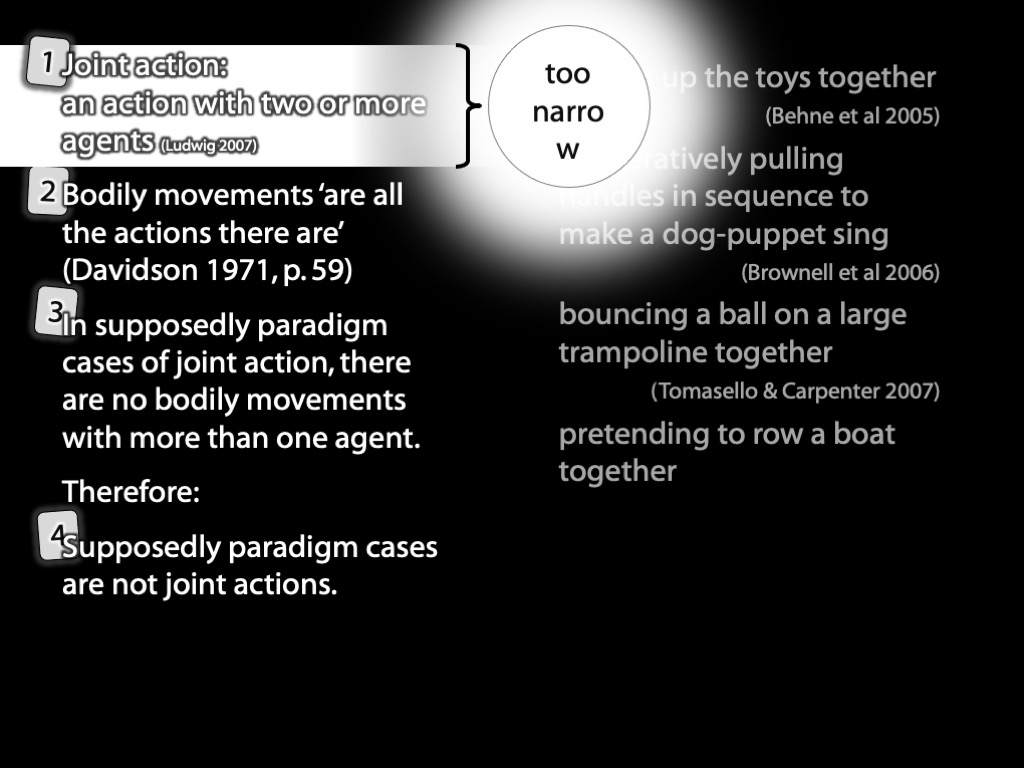
2
quick answer
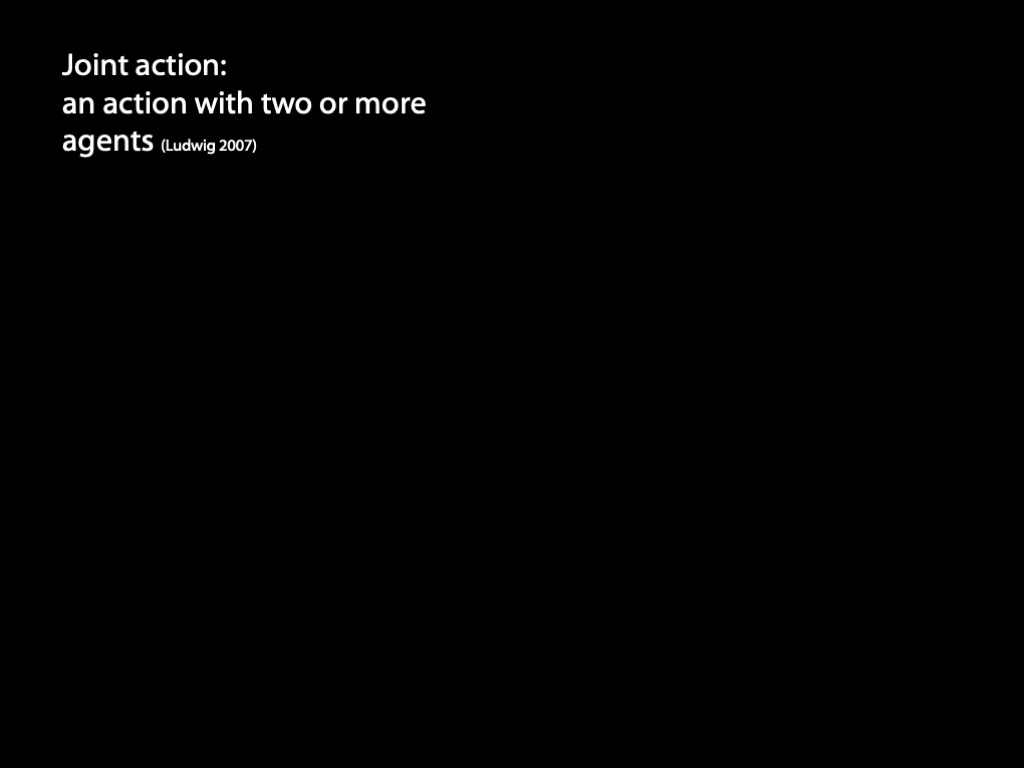
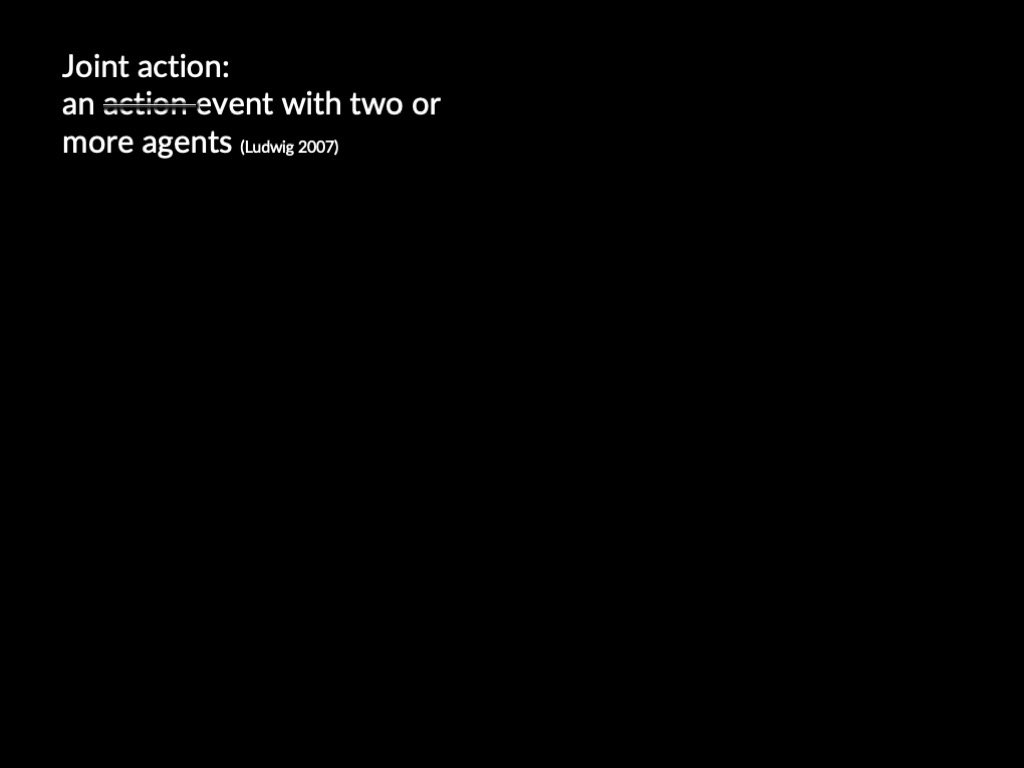
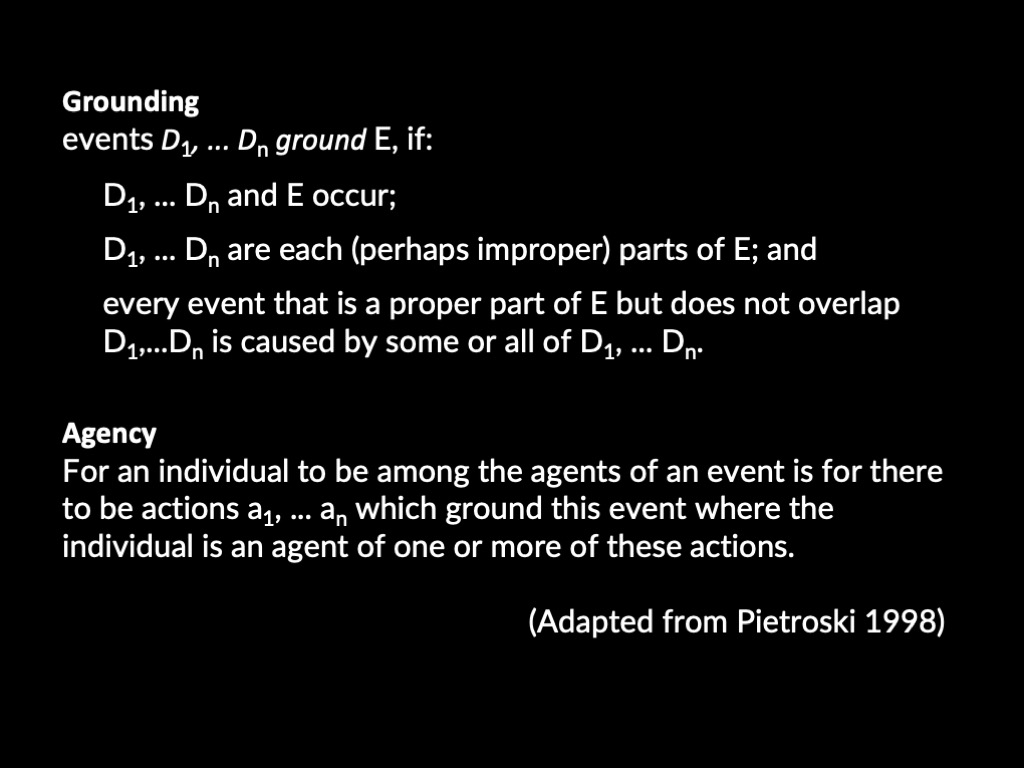
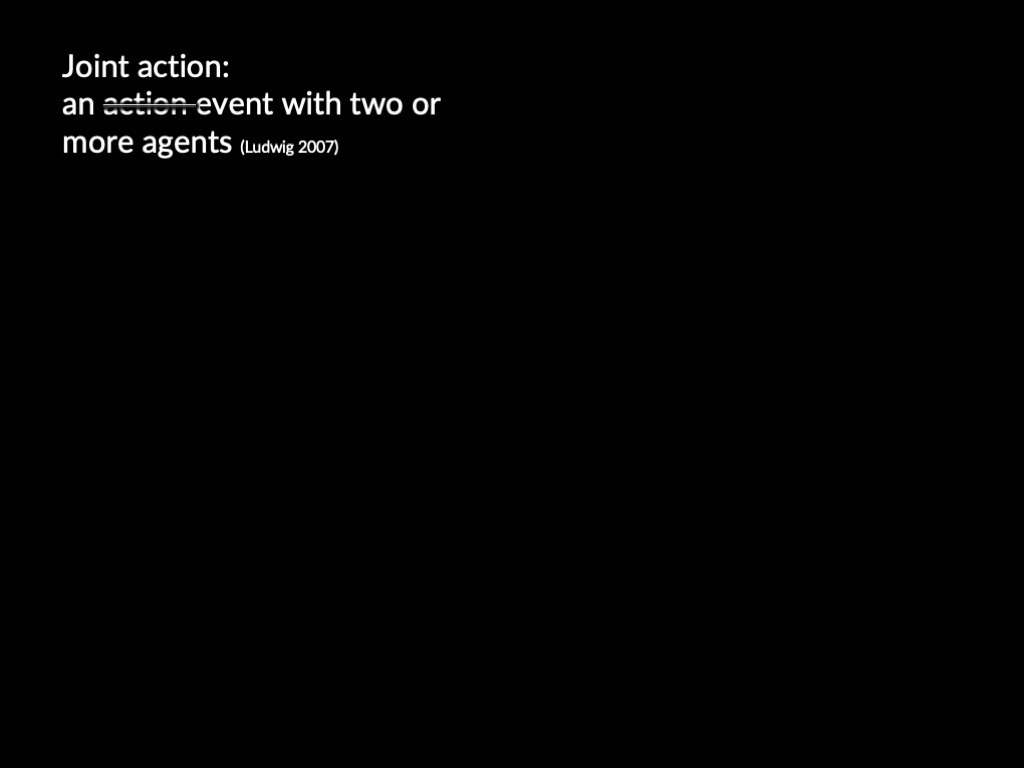
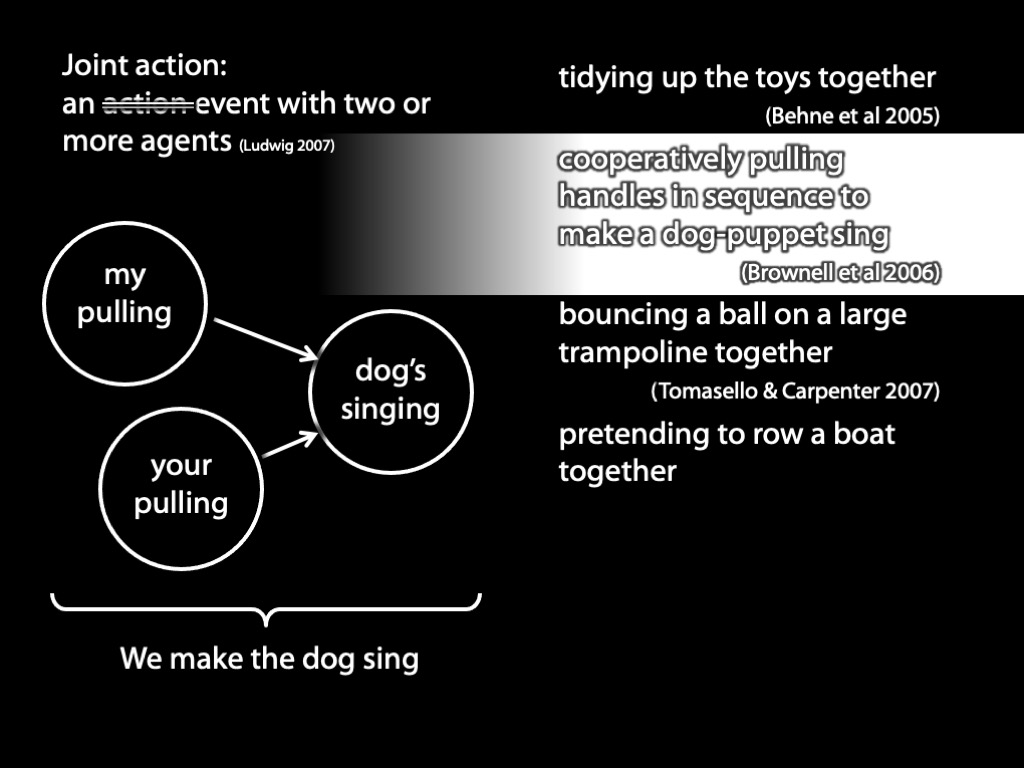
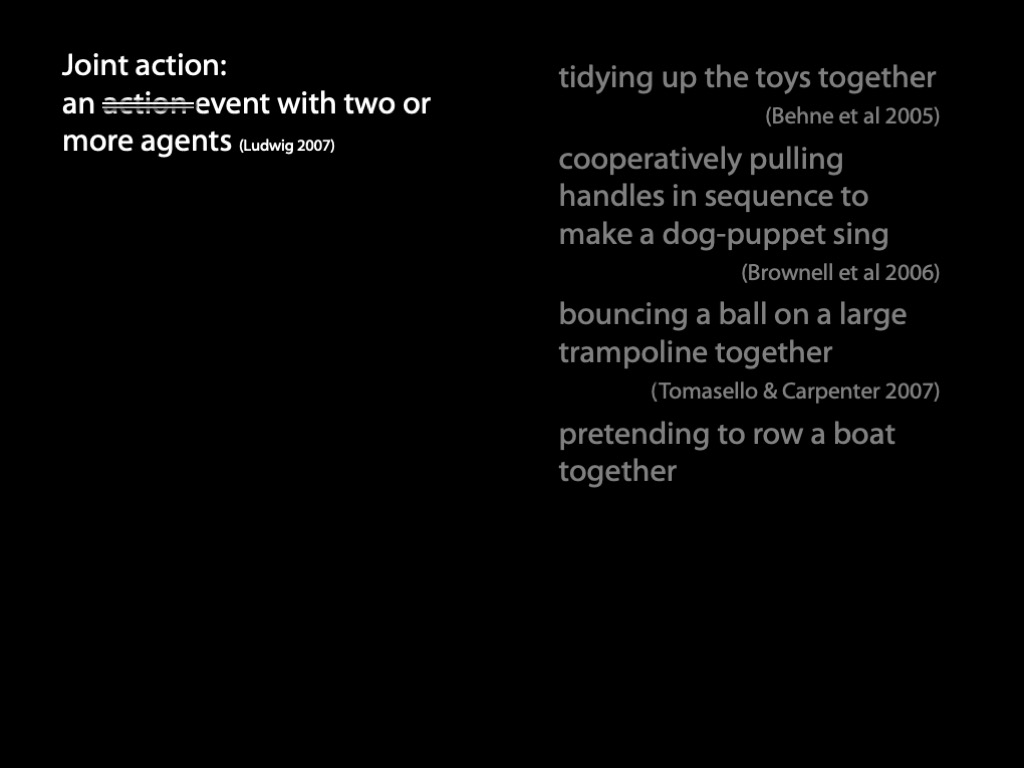
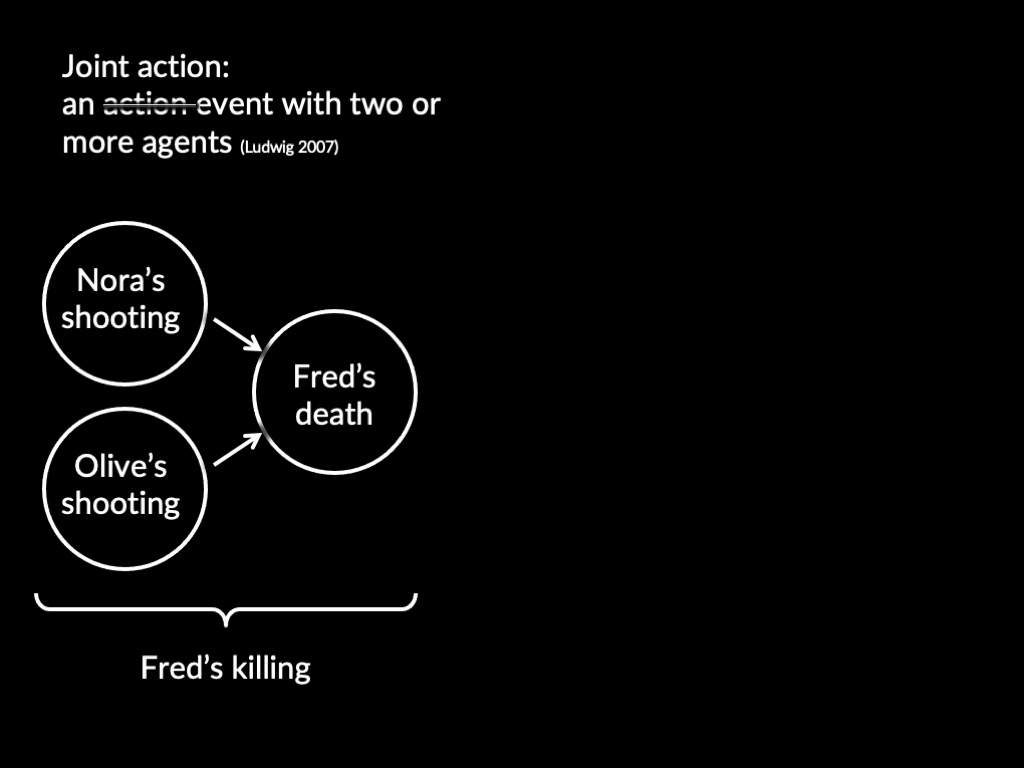
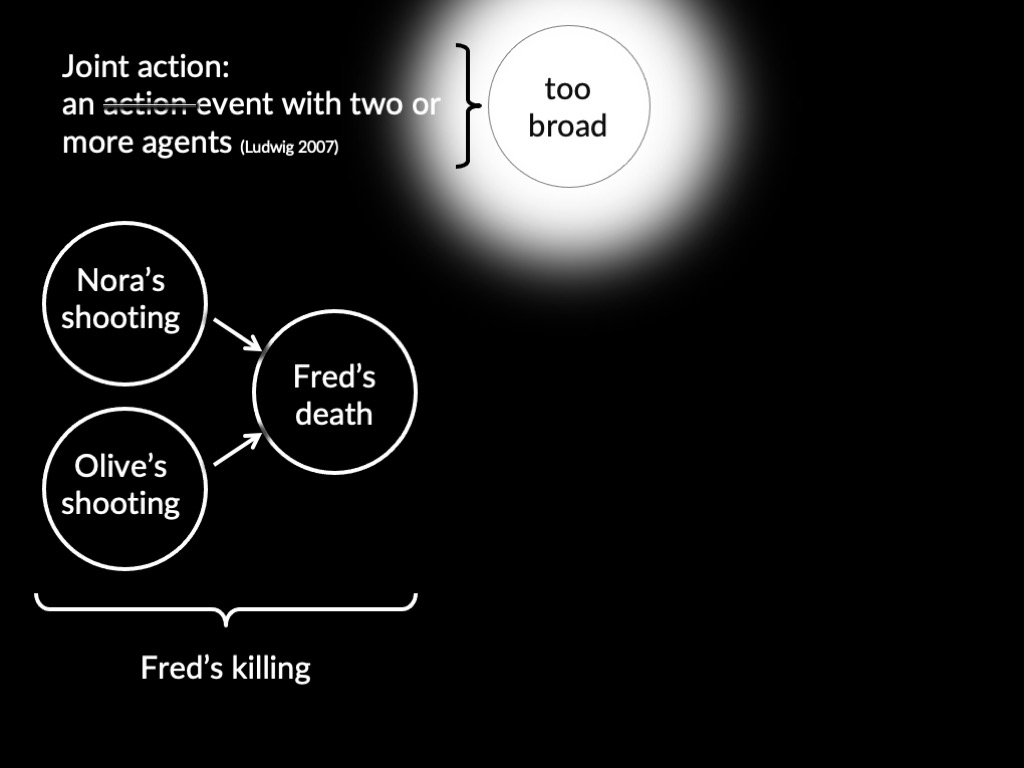
3
quick answer

We each intend that we, you and I, cycle to school together.
What distinguishes ...
... an ordinary, individual action from a mere happening?
— Your intention that you throw the coffee at me.
... genuine joint actions from parallel but merely individual actions?
— Our intentions that we, you and I, cycle to school together.
The Simple Theory
Two or more agents perform an intentional joint action
exactly when there is an act-type, φ, such that
each agent intends that
they, these agents, φ together
and their intentions are appropriately related to their actions.
Question
What distinguishes joint actions from parallel but merely individual actions?
Requirement
Any account of shared agency must draw a line between joint actions and parallel but merely individual actions.
Aim
Theoretical framework for psychology and formal models.
Joint actions are actions with two or more agents ✘
Joint actions are events with two or more agents ✘
The Simple Theory ✘
quick responses failed
The so-called Problem of Joint Action really is a problem.
short essay question:
Why, if at all, do we need a theory of shared intention?
(Will be a while before this question makes sense.)
plan d’attaque
premise: Shared intention can only be understood as the solution to a problem.
1. What is the Problem of Joint Action? ✓
2. Can we solve the Problem without shared intention? ✓
3. If we do need shared intention, what is the best account available? ✓
short essay question:
Why, if at all, do we need a theory of shared intention?
possible argument
1. The Problem of Joint Action is a genuine problem.
2. We need a theory of shared intention only if the Problem cannot be solved without one.
short essay question:
Why, if at all, do we need a theory of shared intention?
(Will be a while before this question makes sense.)
plan d’attaque
premise: Shared intention can only be understood as the solution to a problem.
1. What is the Problem of Joint Action? ✓
2. Can we solve the Problem without shared intention? ✓
3. If we do need shared intention, what is the best account available? ✓